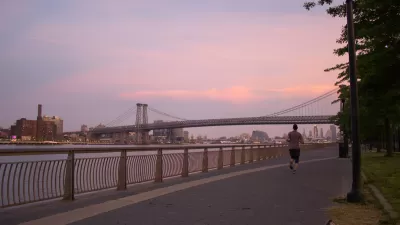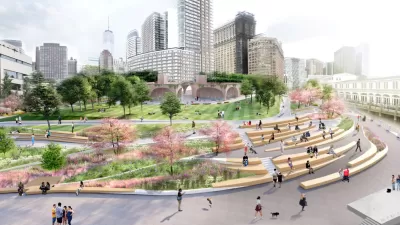As New York and New Jersey continue to recover from Hurricane Sandy, some residents choose to preserve the watermarks left on their homes and businesses as a way to commemorate their survival.
"For some people bruised by the hurricane, the waterline has become something of a signature of survival. Most building owners and homeowners have understandably wiped away theirs as they have repaired and rebuilt what the waves gulped up, trying to forget. But quite a few, as part of their formulas to reconcile with the storm, have chosen to live with that waterline, not always knowing why," writes N.R. Kleinfield.
"At Meade's restaurant in the South Street Seaport, customers hunched over the busy bar, washing down beers beneath spindly shadows cast through the windows. Easy to spot the waterline here. The rush of water chewed away the paint on the wall up to above five feet, leaving a smudged surface. So it remains, and will remain. Printed on the wall is what it signifies."
"[Owner Lee] Holin lived nearby in Chinatown and was evacuated from his home. A year later, he still feels the congruent traumas. 'I was homeless and in financial ruin in one shot,' he said. 'I really thought I was going to move back in with my parents at 37 years old. It has definitely affected my psyche. I’m scared of going out of business for any reason. Things I can’t even think of.'"
"Outside Meade's stands a chalkboard, the kind where you advertise Happy Hour or a meat loaf special. Months ago, a bartender scribbled a defiant message that remains intact: 'What doesn't kill us makes our drinks stronger. Nice try, Sandy! Long live the Seaport!'"
In this multimedia piece, Kleinfield's stories of preserving signs of damage are accompanied by audio clips of residents and business owners describing the significance the six-foot high stains hold for them.
FULL STORY: Turning Hurricane Sandy’s Scars Into Badges of Survival

Planetizen Federal Action Tracker
A weekly monitor of how Trump’s orders and actions are impacting planners and planning in America.

Restaurant Patios Were a Pandemic Win — Why Were They so Hard to Keep?
Social distancing requirements and changes in travel patterns prompted cities to pilot new uses for street and sidewalk space. Then it got complicated.

Map: Where Senate Republicans Want to Sell Your Public Lands
For public land advocates, the Senate Republicans’ proposal to sell millions of acres of public land in the West is “the biggest fight of their careers.”

Maui's Vacation Rental Debate Turns Ugly
Verbal attacks, misinformation campaigns and fistfights plague a high-stakes debate to convert thousands of vacation rentals into long-term housing.

San Francisco Suspends Traffic Calming Amidst Record Deaths
Citing “a challenging fiscal landscape,” the city will cease the program on the heels of 42 traffic deaths, including 24 pedestrians.

California Homeless Arrests, Citations Spike After Ruling
An investigation reveals that anti-homeless actions increased up to 500% after Grants Pass v. Johnson — even in cities claiming no policy change.
Urban Design for Planners 1: Software Tools
This six-course series explores essential urban design concepts using open source software and equips planners with the tools they need to participate fully in the urban design process.
Planning for Universal Design
Learn the tools for implementing Universal Design in planning regulations.
Heyer Gruel & Associates PA
JM Goldson LLC
Custer County Colorado
City of Camden Redevelopment Agency
City of Astoria
Transportation Research & Education Center (TREC) at Portland State University
Camden Redevelopment Agency
City of Claremont
Municipality of Princeton (NJ)





























